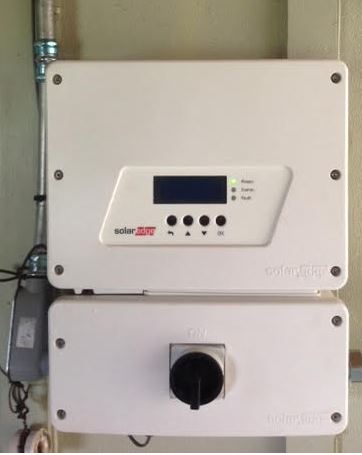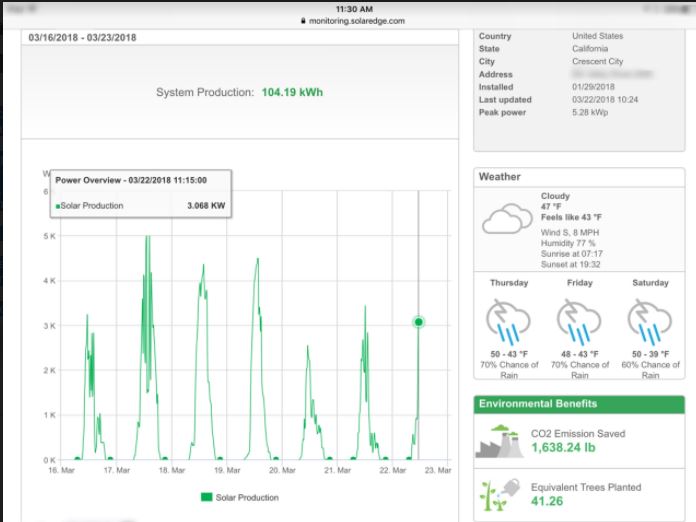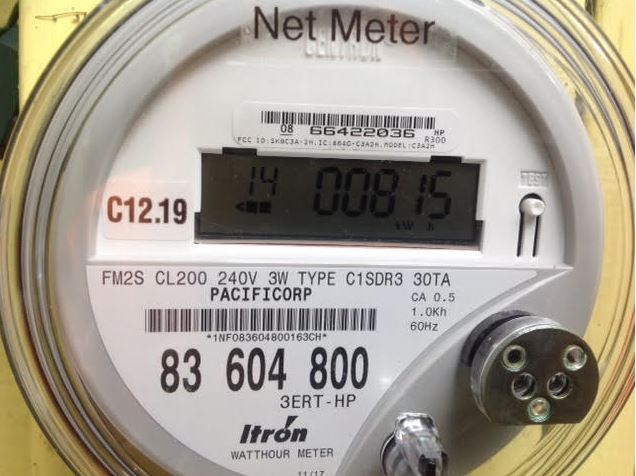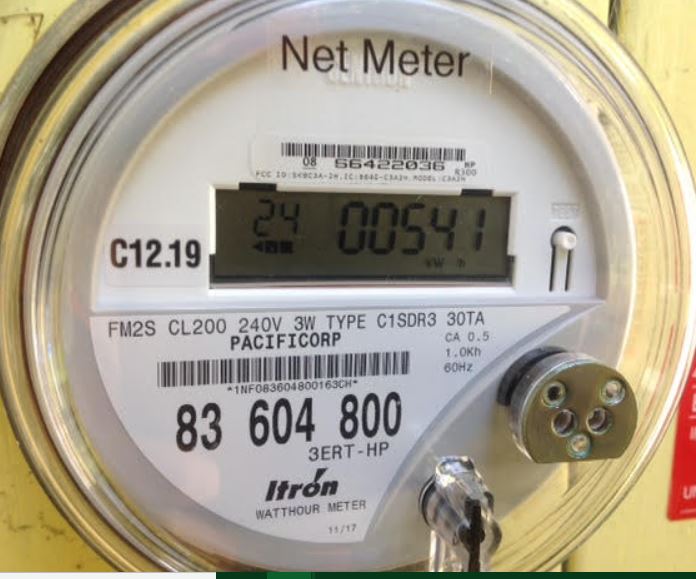By Paul Senyszyn – March 24, 2018 – In this second installment I will address comments to the first article before talking about how my system is performing.
There was one comment that seemed to create confusion and misunderstanding about the issue of “maintenance.”
In Part 1, (published on January 31, 2018) it didn’t seem to come across as to why I chose a full service solar power provider since the comment made it seem as if I needed to have a great deal of electrical experience to maintain my solar system. Quite the contrary!
So, let me be clear. I do not have much expertise in electricity. As a matter of fact, after a near fatal accident while working on a small piece of equipment while I was in Mexico, I generally stay away from anything that is electrical unless it’s simple and straighforward. I even get nervous when replacing plugs and switches.
This is the main reason why I chose a full service solar power provider and installer. One that had all the licenses and warranties to back up their work. I don’t have the time or knowledge to deal with maintenance issues. I am a single parent with two elementary age children trying to make ends meet and save money.
So, let me discuss what “maintenance” is required. Basically, the only thing required is to wash off the solar panels to clean off dirt and pollen, “if you want to do it.” If you want to clean them, then spray them with a hose or pressure washer. That is it! There’s nothing else to do because the panels are immovable, fully enclosed and just converts photons of sunlight into an electric current. The current travels through copper wires and goes through an inverter the size of a backpack hung on my garage wall, then connected with more wires to my electric meter. That’s it. Nothing to maintain. And getting the 25 year warranty for the equipments ensures that I don’t have to do anything or pay for anything. If anything goes wrong, or some factory defect that needs replacement then it’s covered.
I used to work at Redwood National Park out of the maintenance facility on Aubell Lane. That facility has the largest solar system in Del Norte County. I helped the park service move into that facility in 2009 when it was completed. The solar system was on the building. We never cleaned the panels and it didn’t require any maintenance because we get plenty of rain to not worry about this “maintenance.” You will probably do much more maintenance cleaning your car or truck in one year than you will ever have to do over the life of your solar system. While a vehicle is a money pit, my solar panels are generating electricity and paying for itself.
The second reason for choosing an experienced installation company is that they designed the correct size system, submitted and obtained the permits, and checked all the codes required. Additionally, Pacific Power requires other engineering requirements.
Remember, solar panels are not some appliance that you just plug in. This is a power generation system. A mini-power plant. It is generating electricity not only for myself, but also for my neighbors. Yes, my local neighbors are benefitting from the extra electricity that my system generates and I get a credit for that. This is how I offset my electric cost to Pacific Power. Pacific Power required extra detailed drawings which my installer provided.
Below is a picture of my inverter and electric wire circuit. It comes down from the solar panel on the left and out to the meter on the right. The inverter is fully enclosed, sealed and weather proof.
Pacific Power still sends me a invoice of my monthly usage and production. I have the option of “true-ing” up each month or at the end of the year. I chose at the end of the year. This allows my solar system to collect as much credit during the summer months which will be put towards my electricity usage during the nighttime and the winter months.
Here’s the great news. My system actually surprised me. Last year my Pacific Power bill for the month of February was over $140. This year my bill for the month of February was $20 and change!
There is a misconception that in order to purchase solar you have to be wealthy. I know that was the way I always thought which is why I waited so long to get a solar system for my house. Let me dispel that myth. I am not wealthy. My divorce cost me a bundle. I’m still recuperating and it’s hard in Del Norte County. But, I do have good credit. I made the decision to take out a loan. The loan required no money down and no payments for three months.
Here’s how the financials are working out. Payments for my solar system loan runs $113 a month which is about what my electricity costs. During this time I just “true up” my bill once a year.
Again, if you want instant gratification, it probably won’t happen but you will save thousands of dollars over the long term. I believe this is something younger people should pursue. I plan to hand my house over to my children so that they will have the benefit of not paying outrageous bills for their electricity in the future.
One thing is for sure. Power rates will never be lower. So, the next time a rate increase comes along, I’ll actually see more savings.
Keep this in mind. There is still a tax credit of 30% for both homeowners and businesses. Additionally, there are two more tax credits for businesses that actually which can add up to a 64% savings. If you’re looking for tax credit, you might want to check out these benefits.
Let’s go over the other big misconception. It’s too rainy and cloudy here in Del Norte County. Below is a picture of my metrics tracked by my inverter and the company that built the unit. What you are looking at is the solar power generation during the past week. Remember, we’ve had a combination of sunshine, clouds and rain and even hail. The breaks between each graph line is nighttime.
As you can see, the clouds and rain do not stop electrical production, it does reduce it. That’s when we have to remember we’re getting credit for a full year. The long days of summer is when most of the credits will be amassed. Even though the metrics may not look graphically impressive, what is impressive is the reduction of my power bill.
Below are the production figures for the week of March 16 to March 23.
When Pacific Power approved my system, they came out and gave me a net meter which tracks energy into my house, and energy generated and put out onto the grid. It flashes two number. 1.) Energy bought from Pacific Power and 2.)Energy put onto the grid which will be the credit. Below these numbers I see two squares and a triangle. The squares and triangle flash in the direction energy flows. I’m able to see the my power flows during the day.
For instance, one day I was doing laundry, my heaters were running and someone was cooking. And, it was raining lightly. So, I was curious to see if my solar system was producing enough electricity to cover all that electrical use.
I went out to my garage and checked the meters. Sure enough, I looked at my meter and there was the triangle pointing in the direction that my solar system was producing more than I needed to buy. This makes me quite happy. Now I try to do my laundry and other high energy consumption appliances during the day while my solar panels are producing more than I need.
The below picture shows the net metering. It shows squares and triangle on a cloudy day. The triangle pointing to the left shows that there is more solar electricity being generated than consumed in my house, thus I am getting credits towards my usage. The top net meter shows the number 14. This indicates the electrical power going into my house (purchased). And the 815 figure is the kWh of electricity purchased.
This next picture is showing the my solar power put onto the grid and credited to me.
As you can see, I’m a little bit behind but it is March and we have had quite a rainy period. There are times when my consumption matches my solar production. During those times I neither get a credit nor a debit. It shows on the meter as a single square.
My goal is to make this informative to everyone who lives here. This is not new technology yet people here are resistant to change. They are resistant to new technology mainly due to their preconceived perceptions and myths and misunderstandings. In the Central Valley, people are putting up solar generation systems on their homes like gang busters because their rates are so much higher. But, we can still do it here and our enviornment is actually better for solar power.
The bottom line is that I will save money in the long run. I will be smiling the next time rates go up because I am unaffected by it. My children are proud that we are one of the few families that have their own solar power generation system.
Here’s the thing. Most of you can too!






This is the third time I have asked how much a system costs. This is the third time that I see no answer. You cannot tell me that solar panels do not require cleaning. I don’t care how much rain falls around here, panels are going to need cleaning in order to achieve maximum efficiency. Any one with a skylight knows that there is accumulation on a skylight in short order, so solar panels are exempt? As far as the components of your system, is the installer going to replace failed components for free? Or is there an associated cost? What happens when ten years down the line your installer goes out of business? What happens to your warranty? Is this cost factored into your electrical costs? When you say that you only paid $20 for one month, does that include the $113 per month that you pay for the equipment? You imply that the equipment will last forever and your children will benefit from your conversion, but the average solar panel has a useful life span of only eighteen to twenty years before it begins to degrade in efficiency. The electrical components are subject to failure even faster depending on a number of factors. Finally the physical materials factor is currently the biggest problem for solar panels becoming more than a minor contributor to the over all total electrical use world wide. As the materials used to produce solar panels become harder to acquire the cost will rise to the point that solar power in its current technological stage becomes cost prohibitive. This is the reason most solar systems are currently being used by government entities. Cost does not matter. Feel good solutions to problems mean more than being prudent stewards of the tax payer’s dollar. We will see just how smart going solar is when your system has a few years on it. There is more to being cautious about relatively new technology than simply being resistant, as most folks don’t have $15,000 to $20,000 to invest in a solar system no matter whether or not you have “good credit”, or need a “tax credit”. It simply is beyond most budgets whether you can save a few bucks on your electric bill or not.